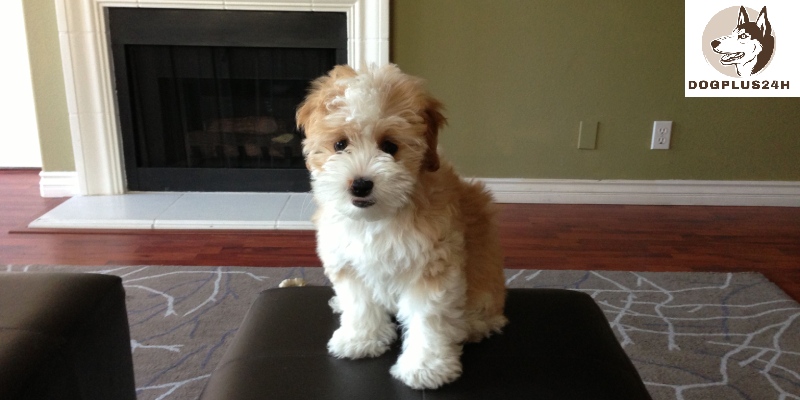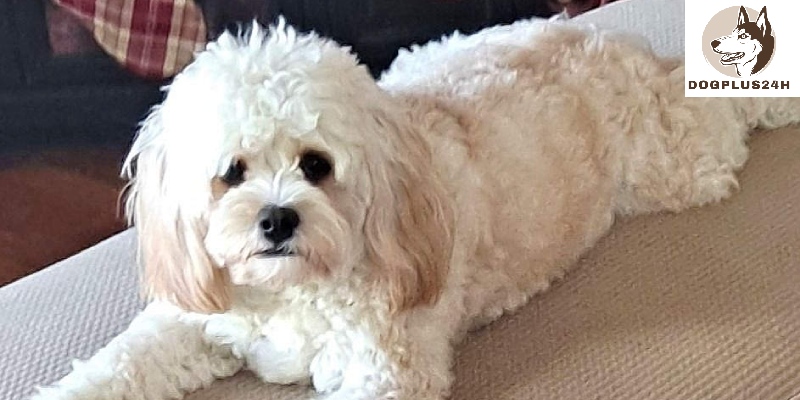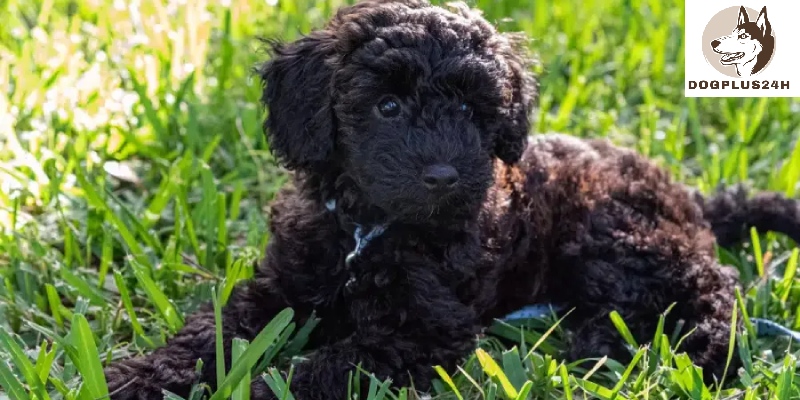Snickerdoodle dog breed is the most adorable dog breed, gorgeous, and has been proven to be the ideal family companion. Join dogplus24h.com to discover everything you need to know about the adorable Snickerdoodle dog breed. From its origins to its distinctive personality, this guide will give you a comprehensive understanding of this adorable canine companion.
The history of the snickerdoodle dog breed
The snickerdoodle dog breed is often called a schnoodle. The Schnoodle was created in the 1980s when there was a surge in interest in Poodle crossbreeds. The Schnoodle’s original purpose was to develop a low-shedding, low-coating family dog breed. Although Schnoodle is not as well-known as other “designer” breeds, there is a significant fan base that has resulted in a high demand for Schnoodle puppies.

Although some breeders have begun breeding multi-generational Schnoodles (Schnoodles bred with other Schnoodles), the Schnoodle is the product of crossing a Schnauzer and a Poodle. There are currently no breed groups or standards, but attempts are underway to establish both.
Because there are three Poodle sizes and three Schnauzer sizes, Schnoodles can come in a variety of sizes. The multitude of possibilities has resulted in an intriguing array of hybrids. Despite this, Schnoodles have always been little dogs. The most recent variety is the addition of the Giant Schnauzer and Standard Poodle to the mix, resulting in a dog with a different temperament than the little, cuddly Schnoodle.
What are the characteristics of the Snickerdoodle dog breed?
To distinguish the Snickerdoodle dog breed from other dog breeds. We have listed a few points worth mentioning.
The appearance
The Snickerdoodle dog breed stands between 12 and 15 inches tall and weighs between 15 and 20 pounds. They can survive for 12 to 15 years if they are properly cared for. They feature huge pointed ears as well as almond-shaped eyes. They are distinguished by their square muzzle, rounded skull, and dark nose.
The temperament
This attractive species has a shimmering and wavy coat that distinguishes them from other types. They are intelligent, loyal, and attentive, and they enjoy playing with their owners. Many dog owners acquire Snickerdoodles because of their charming nature and cute faces, and their popularity is growing.
Snickerdoodle dogs are intelligent and can outperform other dog breeds in many ways. They learn everything you teach them faster than other dog breeds. Furthermore, teaching this dog basic etiquette and potty training will be a breeze.
Physical activity
Because the Snickerdoodle breed is so playful, you may engage your dog in a variety of healthful physical activities. They are very active and can play for extended periods of time without tiring. You can teach your dog tricks and take him on long walks; canines also excel at flyball, agility, and disc dog sports.
You can take your pet swimming in the summer; it is a healthy exercise that will keep your pet cool. Furthermore, after engaging in any activity with your dog, you must consider which activities are best for your dog and which make your dog overtired, and then select the right activity.

Weight and height
The bulk of snickerdoodle dogs are modest in size. Poodles, on the other hand, come in a variety of sizes, including toy, miniature, standard, and giant. As a result, the size of your snickerdoodle puppy is determined by the parent breeds.
The toy schnauzer is a mix between a toy poodle and a tiny schnauzer. Toy Snickerdoodle dog breed can weigh between 4 and 10 pounds. When they are completed growing, they can reach a height of 10-14 inches.
The standard schnauzer-poodle cross is a cross between the standard schnauzer and the standard poodle. Snickerdoodles can grow to be 15-19 inches tall and weigh between 35 and 60 pounds.
The enormous snickerdoodle is the snickerdoodle’s ultimate and largest breed. Giant snickerdoodles are the offspring of a standard poodle and a giant schnauzer. Giant snickerdoodles typically weigh between 40 and 85 pounds and grow to be between 15 and 27 inches tall.
Healthy diet
You should have 3/4 to 1 cup of high-quality dry dog food be fed to your snickerdoodle. This is also determined by the variety of snickerdoodles you have.
If your dog is little, he will require less food; if your dog is large, he will require more food. Consider raw dog food as part of a balanced and nutritious diet for your snickerdoodle if possible.
The majority of dogs prefer raw dog food over ordinary raw food. It is critical to conduct a study and evaluation before purchasing any type of dog food. Don’t be scared to explore and feed your dog new meals.
However, if your dog develops any gastrointestinal troubles, consult with your veterinarian, who will be able to make a decision in favor of the Snickerdoodle dog breed.
Are there any health concerns to consider when owning a snickerdoodle?
In general, the Snickerdoodle dog breed is generally healthy. One thing to keep in mind is that health issues are widespread in the parent breed.
Progressive retinal atrophy (PRA)
Legg calve perthes Disease
The hip joint is involved. The blood flow to the head of the femur (the large rear leg bone) is reduced in a Schnoodle with Legg-Perthes, and the head of the femur that attaches to the pelvis begins to deteriorate.
The initial symptoms, limping and muscle loss, usually appear when puppies are four to six months old. Surgery can address the problem, resulting in a pain-free puppy.
Gastric torsion
This potentially fatal illness can affect large, deep-chested dogs. So, most Schnoodles which are typically small are not affected.
However, if your Schnoodle is enormous and has a father who is a Giant Schnauzer, you should be aware of this problem. If the dog is served one substantial meal per day, eats rapidly, drinks plenty of water after eating, and moves enthusiastically after feeding, there is an increased risk.
Bloat occurs more frequently in elderly dogs. GDV occurs when the stomach twists after being bloated with gas or air. The dog is unable to burp or vomit to eliminate excess air from the stomach, and the normal flow of blood to the heart is hampered.
The dog’s blood pressure decreases and he goes into shock. The dog may die if medical assistance is not provided immediately. If your dog has a distended stomach, excessive salivation, and regurgitation without vomiting, he may have bloat. If you see any of these symptoms, you should take your dog to the vet as soon as possible.
Addison’s disease
The majority of Addison’s disease dogs vomit, have a low appetite, and have little activity. Because these symptoms are ambiguous and can be confused with other disorders, it is easy to misdiagnose this disease until it has progressed to a more advanced state.
More severe symptoms appear when a dog is stressed or when potassium levels rise to the point where they interfere with heart function, resulting in severe shock and death. If your veterinarian suspects Addison’s disease, she may run a battery of tests to confirm the diagnosis.
Epilepsy
This is a neurological disorder that is frequently, but not always inherited. It can produce mild to severe seizures, which might manifest as strange behavior or as falling down, rigid limbs, and loss of consciousness.
Seizures are frightening to watch, but for dogs with idiopathic epilepsy, the long-term prognosis is often extremely excellent. It is critical to take your dog to the veterinarian for accurate diagnosis and treatment.
Diabetes mellitus
A diabetic dog will try to compensate by eating more food, but he will lose weight because food is not being used efficiently. Diabetes symptoms include excessive urine and thirst, an increase in hunger, and weight loss. Diabetes can be managed with diet and insulin treatment.
What about the mental health of a Snickerdoodle dog breed?
While Snickerdoodle dogs are generally healthy on the physical side, there are some mental health concerns to be mindful of. Many Schnoodle dogs are reported to have a common mental health issue.

Separation anxiety is extremely prevalent in a wide range of animals. When we leave our furry buddies, they become really sad.
Some people have installed cameras inside their homes to monitor what their pets do while they are away. Most of them discover that their pet has been waiting for them all day at the door.
What human foods can our Snickerdoodle Dog Eat?
Carrot
Carrots can be eaten by the Snickerdoodle dog breed either cooked or uncooked. Carrots are a fantastic source of fiber and minerals for your dog.
In fact, carrots are a common ingredient in the majority of dog food products. Feeding fresh carrots to your dog should be done thinly to avoid choking.
Peanut butter
Peanut butter is another acceptable and even healthy choice to feed your Snickerdoodle on occasion. However, because peanut butter is high in fat, it is better to serve it to your dog in moderation.
Fresh meats
Fresh meats such as salmon, chicken, or turkey can also be enjoyed by your dog. To avoid choking, make sure to remove any and all bones while feeding your snickerdoodle dog chicken. If you are ever in question, there are many resources on the internet that will tell you what is and is not safe for your dog.
What human foods are harmful to our Snickerdoodle?
Because dogs have a different metabolism than humans, some meals are not suitable for them. If you decide to give your dog human food as a treat, there are some foods you should always avoid. Human foods that are known to have hazardous components for our pets include:
- Raisins
- Chocolate
- Grapes
- Garlic
- Onions
If you fear your snickerdoodle dog has eaten something harmful, contact your veterinarian as soon as possible and schedule an emergency visit.

What is the most effective way to train our Snickerdoodle puppy?
The snickerdoodle dog breed is well-known for its intelligence. If you are consistent with your dog training, Snickerdoodle puppies can learn new skills within the first few days.
Foods
Snickerdoodles dog breed like other dogs, are food-driven. Offering treats is one of the greatest ways to educate a snickerdoodle dog. Besides, they are likely to respond very well when offered with positive reinforcement. Positive reinforcement appears to be more effective in training dogs than negative reinforcement.
Patient
When training your new snickerdoodle dog it is important to remember to never get visibly angry or frustrated when training. You should never strike or talk to your snickerdoodle dog in a way that induces fear or anxiety.
If you are struggling to train your snickerdoodle dog at home, consider investing in a personal dog trainer. Dog trainers specialize in canine behavioral studies, so this is definitely a solid option for you and your snickerdoodle dog.
In conclusion
The Snickerdoodle dog breed is more than just a dog breed; it is a respected friend and devoted companion. They bring infinite joy and precious memories to every family with their affection and pioneering intelligence. If you’ve fallen in love with this breed, get ready to welcome a new member who will bring you warmth and joy.


